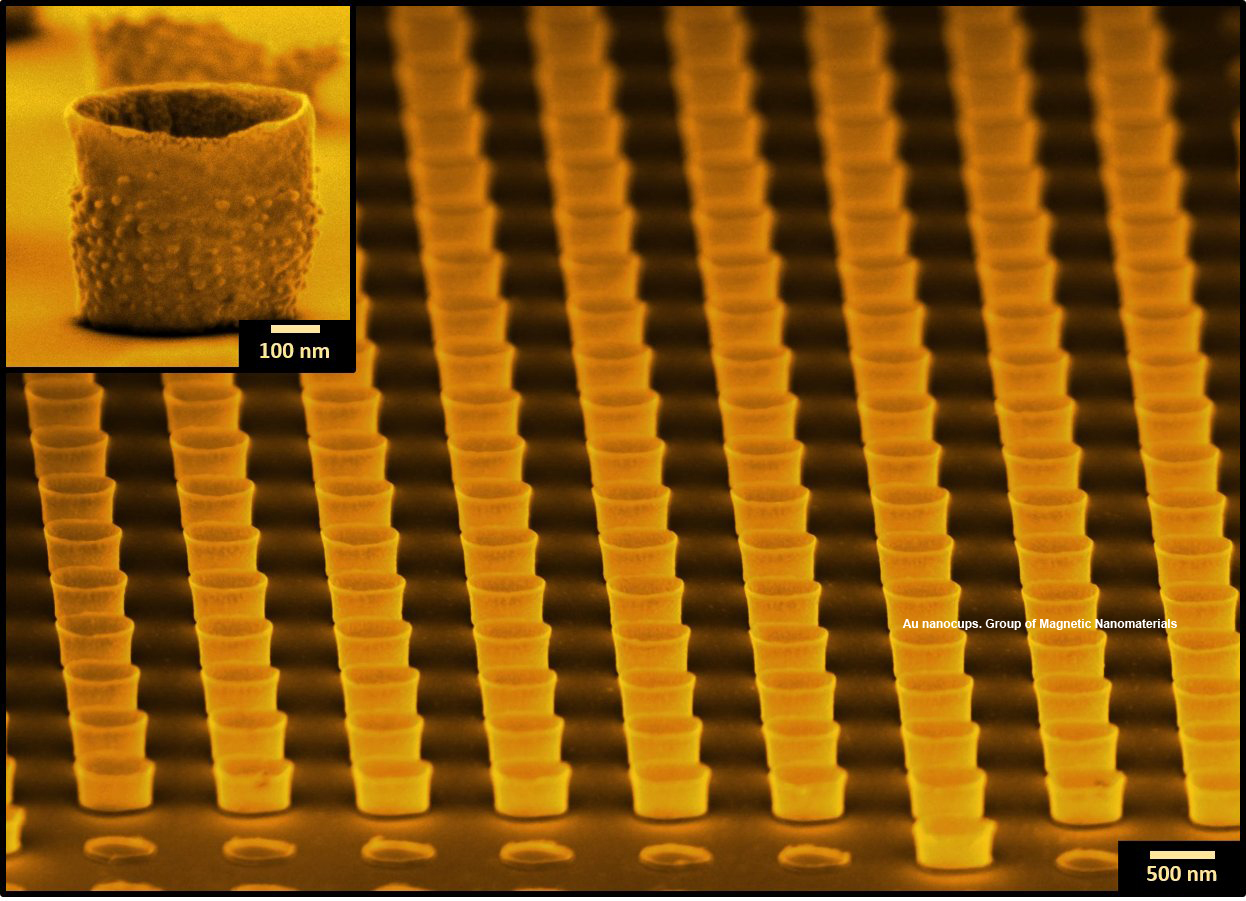NanoMet
Modeling, Simulation and Nanoscopic Methods
(Coordination: Dr. Francesca Peiró Martínez)
This research area develops instrumentation and methodology (employing experimental and theoretical tools) to characterize nanostructures and nanosystems of any nature,
A.- NanobioInteractions: Interactions between biological and nanoscopic systems.
B.- Confinement-related phenomena: reactivity, magnetism, optoelectronics and quantum photonics.
C.- Transport and conduction.
D.- Surface effects.
E.- Electronic structure and excitations.
F.- Bose-Einstein condensates and quantum confined gases.
G.- Advanced Electronic Microscopy (EFM, TEM, STM, EELS, EDS)
H.- Instrumentation and Methodology Development in Electron Microscopy.
NanoBio
Nanobioscience, Nanobiomechanics and BioNanotechnology
(Coordination: Dr. Núria Gavara Casas)
This research area studies the organizational patterns observable in the molecular structures that control and rule the biological systems both at the cellular and at the molecular scales. Its most relevant application is that of developing techniques and devices aimed at prevention and diagnose in nanomedicine.
A.- Functionalisation of surfaces.
B.- Cellular and molecular biomechanics
C.- Biomimetic structures and systems
D.- Nanofluidics and nanorobotics. Nanomotors.
E.- Diagnosis in nanomedicine: marking and molecular observation
F.- Nanobiosensors; DNA and Protein Chips; lab on chip.
NanoPharmaMed
Nanopharmaceutics and Nanomedicine (NanoPharmaMed)
(Coordination: Dr. M. José García Celma)
This area aims at developing nanostructured systems for controlled drug release and to the improvement of drug therapeutic efficiency when administered on targets to treat diseases.
A.- Nanostructured Systems for controlled drug release. Nanocapsules.
B.- Nanostructured systems interaction with biological structures.
C.- Bioavailability, toxicity and therapeutic efficiency of nanostructured systems.
D.- Non-viral vectors. Gene therapy. Pharmacogenomics and nutrigenomics.
E.- Molecular internalization, molecular marking and detoxification.
NanoMagnetics
Nanomagnetism and Spintronics
(Coordination: Dr. Xavier Batlle Gelabert)
The area aims at developing new systems for storage and processing of information at the nanoscopic scale for information processing. It is also devoted to the study of new phenomena appearing at the nanometric size for the implementation of innovative devices of application in healthcare, sustainable energy, environment, healthy food and security.
It is also involved with the preparation and study of multifunctional molecular nanomagnets for spintronics and quantum computing.
A.- Magnetic nanoparticles and single molecule magnets.
B.- Dynamic processes in nanomagnetism and interaction with microwaves.
C.- Magnetic electronics.
D.- Spin-based molecular quantum bits and quantum gates for quantum computing.
NanoPhotoElectro
Nanoelectronics, Nano-optics and Nanophotonics
(Coordination: Dr. Martí Duocastella Solà)
Study and exploitation at the nanoscale of the interaction of electric, magnetic and optical properties for the design of functional nanosystems.
A.- NEMS (Nanoelectromechanical Systems).
B.- Nanodevices, nanosensors and electronic nanosystems, optoelectronics and photonics. Photonic crystals.
NanosMat
Nanostructured materials
(Coordination: Dr. Enric Bertran Serra)
This research area aims at developing new nanostructured materials or improving the properties of existing materials. This line also includes knowledge-frontier research in characterization techniques and manipulation tools at the nanoscale (as electron and probe microscopies, surface analysis, or spectroscopic and magnetic characterization).
A.- Synthesis, nanomanufacturing and nanomanipulation.
B.- Thin layers, nanostructured multilayers and coatings.
C.- Nanoparticles, gels, nanofibers, nanorods, nanothreads and nanotubes.
D.- Nanostructured metallic oxides.
E.- Mesoporous Materials and Nanopatterns.
NanoEnergy
Nanoenergy: Production and Storage
- Nanoenergy: Production and Storage (NanoEnergy)
(Coordination: Dr. Narcis Homs Martí)
The aim of this research line is the application of nanomaterials to energy production and storage to overcome efficiency and lifetime limits.
A.- Catalytic nanostructures for energy production. Fuel cells.
B.- Nanomaterials for solar cells and photocatalytic processes.
C.- Nanostructured systems for energy storage.


